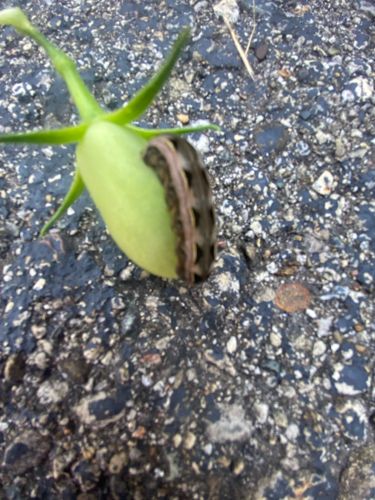Armyworm (likely a species of Spodoptera or Mythimna)
Scientific Name: Spodoptera frugiperda (Fall Armyworm) or similar species within Noctuidae
Order & Family: Order: Lepidoptera, Family: Noctuidae
Size: Larvae (caterpillars) typically range from 2.5 to 4.0 cm (1 to 1.6 inches) in length when fully grown.

Natural Habitat
Found in agricultural fields, grasslands, gardens, and other areas with abundant vegetation. They are common in temperate and subtropical regions worldwide, especially where host plants are readily available.
Diet & Feeding
Larvae (caterpillars) are polyphagous, feeding on a wide variety of plants, including grasses, corn, wheat, oats, alfalfa, soybeans, and various vegetable crops like the one seen in the image. They primarily consume leaves but can also bore into fruits and stems.
Behavior Patterns
Armyworms are nocturnal feeders, often hiding in the soil or under debris during the day. They are known for their 'marching' behavior in large groups when food resources become scarce in one area, moving to new feeding grounds. They overwinter as pupae in the soil. The larvae (caterpillars) are the damaging stage, consuming large amounts of foliage.
Risks & Benefits
Risks: Armyworms are significant agricultural pests, capable of causing widespread defoliation and considerable economic damage to various crops. Large outbreaks can devastate entire fields. Benefits: As with many insects, they can serve as a food source for birds, parasitic wasps, and predatory insects, playing a role in the food chain. However, their pest status usually outweighs any minor ecological benefits.
Identified on: 8/9/2025